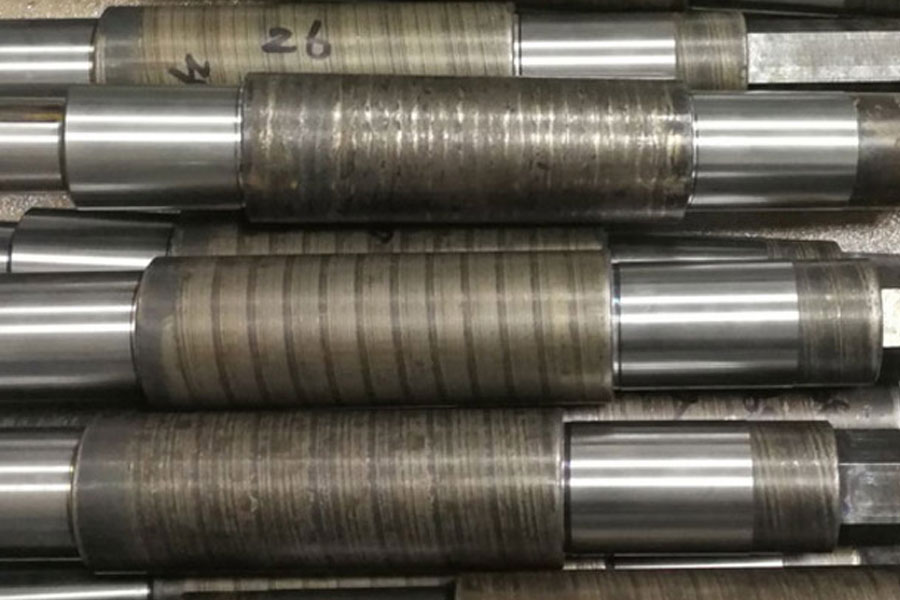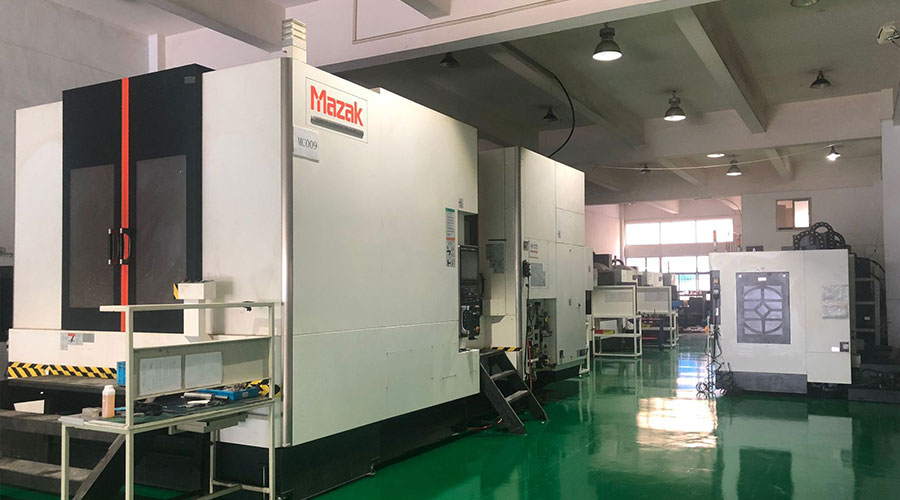China’s shaft parts machining industry has developed rapidly in recent years, and various large-scale mechanical machining plants are also constantly innovating and improving shaft machining technology. For the machining of shaft parts, we not only need to know the large-scale mechanical machining plants. The regulations of the machining technology and the safety production requirements of large-scale mechanical machining plants, as well as the process requirements of mechanical machining, so what are the process requirements of mechanical machining of shaft parts?

1. Dimensional accuracy
The journal is the main component of shaft parts, which affects the rotation accuracy and working state of the shaft. The diameter accuracy of the journal is usually IT6-9 according to its use requirements, and the precision journal can reach IT5.
2. Geometric shape accuracy
The geometric shape accuracy (roundness, cylindricity) of the journal should generally be limited to the range of the diameter tolerance point. For those with higher geometrical accuracy requirements, the allowable tolerance can be specified on the part drawing.
3. Position accuracy
Refers to the coaxiality of the mating journal of the assembled transmission part relative to the supporting journal of the assembled bearing. It is expressed by the radial runout of the supporting journal to the supporting journal; according to the requirements of use, the high-precision shaft is specified as 0.001~ 0.005mm, and the general precision axis is 0.01~0.03mm. In addition, there are requirements for the coaxiality of the inner cylindrical surface and the perpendicularity between the axial positioning end surface and the axis line.
4. Surface roughness
According to the different working parts of the parts, there can be different surface roughness values. With the increase of the machine’s operating speed and the improvement of the precision, the requirements for the surface roughness of the shaft parts are getting smaller and smaller.
5. It is not allowed to use the bearing surface with different colors
The alloy bearing lining surface is not allowed to be used when the surface is yellow, and the nucleation is not allowed within the specified contact angle. The nucleation area outside the contact angle shall not be greater than 10% of the total area of the non-contact area. The reference end surface of the gear (worm gear) is The shaft shoulder (or the end face of the positioning sleeve) should fit well and cannot be checked with a 0.05mm feeler gauge. And should ensure the verticality requirements of the reference end face of the gear and the axis.
6. Contact surface
After assembly, the outer ring of the bearing should contact the end surface of the bearing cap of the positioning end evenly. After the rolling bearing is installed, it should be flexible and stable by hand. The joint surface of the upper and lower bearing bushes should be closely attached. It cannot be checked with a 0.05mm feeler gauge; fixed with a positioning pin. When bearing bushes, drill reaming and pin distribution should be ensured under the condition that the socket face and end face of the bush are flush with the opening and closing face and end bread of the relevant bearing hole. Do not loosen the pin after driving in.
Summarize
The accuracy requirements of shaft parts are relatively high, so the process requirements for shaft parts machining should be more stringent, so as to better ensure that the mechanical equipment can operate better and have a longer service life. PTJ machining focuses on large-scale machining. The machining and manufacturing of hardware parts, undertaking the machining of precision mechanical parts, large-scale CNC gantry milling machining, frame welding machining, and horizontal CNC machining.
Link to this article: The Process Requirements For Shaft Machining
Reprint Statement: If there are no special instructions, all articles on this site are original. Please indicate the source for reprinting:https://www.cncmachiningptj.com/
 Sheet metal, Copper Milling, carbon steel,online laser cutting service, 3D printing, precision CNC machining services for heavy equipment, construction, agriculture and hydraulic industries. Suitable for plastics and rare alloys machining. It can turn parts up to 15.7 inches in diameter. Processes include swiss machining,broaching, turning, milling, boring and threading. It also provides metal polishing, painting, surface grinding and shaft straightening services. The production range(include aluminum die casting and zinc die casting) is up to 50,000 pieces. Suitable for screw, coupling, bearing, pump, gearbox housing, drum dryer and rotary feed valve applications.PTJ will strategize with you to provide the most cost-effective services to help you reach your target,Welcome to Contact us ( [email protected] ) directly for your new project.
Sheet metal, Copper Milling, carbon steel,online laser cutting service, 3D printing, precision CNC machining services for heavy equipment, construction, agriculture and hydraulic industries. Suitable for plastics and rare alloys machining. It can turn parts up to 15.7 inches in diameter. Processes include swiss machining,broaching, turning, milling, boring and threading. It also provides metal polishing, painting, surface grinding and shaft straightening services. The production range(include aluminum die casting and zinc die casting) is up to 50,000 pieces. Suitable for screw, coupling, bearing, pump, gearbox housing, drum dryer and rotary feed valve applications.PTJ will strategize with you to provide the most cost-effective services to help you reach your target,Welcome to Contact us ( [email protected] ) directly for your new project.
Link to this article:The Process Requirements For Shaft Machining
Reprint Statement: If there are no special instructions, all articles on this site are original. Please indicate the source for reprinting.:Cut Wiki,Thanks!^^
